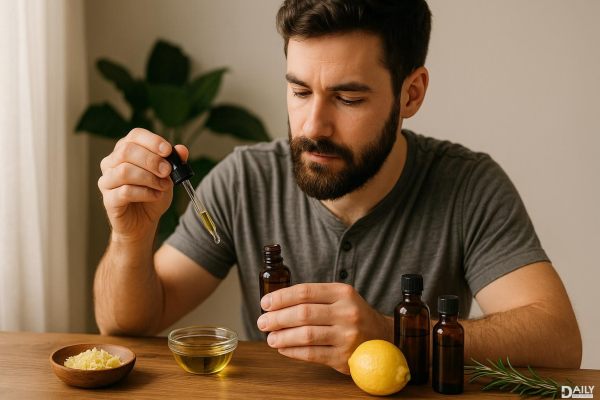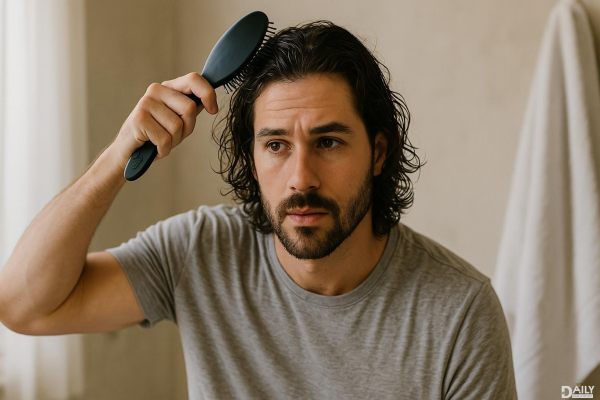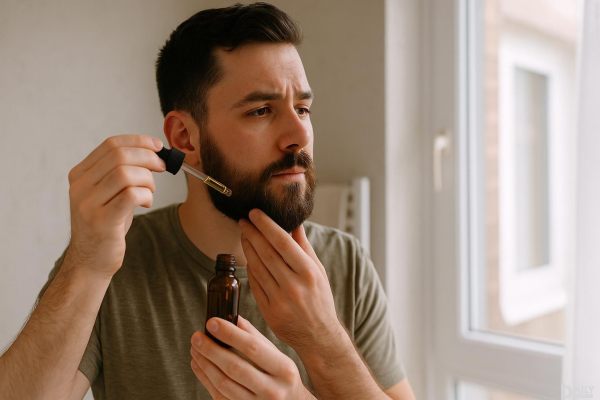Growing a beard is one thing, but keeping it healthy, soft, and full is a whole different ball game. That’s where DIY beard oil comes in—a game-changer for any guy looking to level up his facial hair game without breaking the bank. Forget the overpriced store-bought stuff packed with mystery ingredients; making your own beard oil is easier than you think, and you get full control over what goes into it. Plus, it’s a fun way to experiment with scents and textures that suit your style. Whether you’re a beard newbie or a seasoned pro, these natural recipes will keep your whiskers looking and feeling their best.

Commercial beard oils often contain synthetic fragrances, preservatives, and fillers that can irritate your skin or dry out your beard. By making your own, you skip the junk and use pure, natural ingredients that actually nourish your hair and the skin underneath. Think of it like cooking at home versus eating fast food—you know exactly what’s going in, and it’s way better for you. Plus, DIY oils let you customize the scent and consistency based on your preferences. Want something woodsy? Add cedarwood oil. Prefer a citrusy kick? A few drops of orange essential oil will do the trick. The possibilities are endless, and your beard will thank you.
Every great beard oil starts with a carrier oil—the foundation that delivers moisture and nutrients. Jojoba oil is a top pick because it mimics your skin’s natural sebum, keeping irritation at bay while promoting healthy growth. Argan oil, often called "liquid gold," is packed with vitamin E and fatty acids to soften coarse hair. For a budget-friendly option, sweet almond oil works wonders, especially for sensitive skin. Pro tip: Mix two or three carriers for a balanced blend. For example, try 1 oz jojoba + 1 oz argan for a luxe feel, or jojoba + grapeseed oil for a lighter texture. The key is to avoid heavy oils like coconut (unless you’re going for a thicker consistency) since they can weigh down finer facial hair.
This is where the magic happens—essential oils add fragrance and extra perks like anti-inflammatory or antimicrobial properties. Tea tree oil is a powerhouse for fighting beard dandruff (yes, it’s a thing), while lavender soothes itchy skin and smells like a spa day. For a masculine, earthy vibe, try sandalwood or patchouli. If you’re into fresh, energizing scents, peppermint or eucalyptus will wake up your senses. A little goes a long way: Just 5–10 drops per ounce of carrier oil is plenty. Always do a patch test first, though—some oils (like cinnamon or clove) can be harsh on sensitive skin.
Ready to mix up your first batch? Here are three foolproof recipes: 1、The Classic: 1 oz jojoba oil + 1 oz argan oil + 5 drops cedarwood + 3 drops lavender. Perfect for everyday use, with a balanced woodsy-floral scent. 2、The Refresher: 1 oz sweet almond oil + 1 oz grapeseed oil + 7 drops peppermint + 3 drops lemon. Ideal for summer or post-workout freshness. 3、The Soother: 1 oz jojoba + 1 oz apricot kernel oil + 4 drops tea tree + 4 drops chamomile. Great for irritated skin or beardruff flare-ups. Store your oil in a dark glass dropper bottle (light degrades oils), and shake well before each use. Apply 3–5 drops to your palms, rub them together, and work it through your beard from root to tip. Morning or night—your call.
Oil is just one piece of the puzzle. Comb your beard daily with a boar bristle brush to distribute oils evenly and exfoliate the skin. Wash it 2–3 times a week max (overwashing strips natural oils) with a sulfate-free beard shampoo. And don’t forget to trim split ends every few weeks to maintain shape and prevent breakage. Pair these habits with your DIY oil, and you’ll have a beard so soft, people will ask to touch it (seriously).
At the end of the day, beard oil isn’t just about looks—it’s about feeling confident in your own skin (literally). With these recipes and tips, you’re not just growing facial hair; you’re crafting a lifestyle. So grab those oils, get mixing, and wear that beard with pride.
























